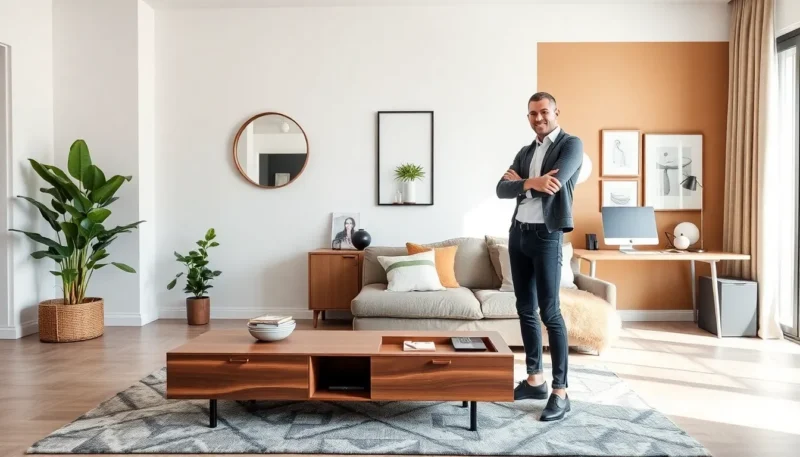Commercial outdoor environments are changing quickly. Hotels, luxury resorts, senior living communities and large multifamily developments now view their exterior spaces as essential components of the guest experience, not secondary amenities. This shift is driving a renewed focus on durability, comfort and high performance materials across all categories of commercial outdoor seating.
For many designers and procurement teams, the benchmark for quality continues to be found in the contract furnishings produced by long-standing industry leaders such as Walters Wicker and the company’s outdoor division, Walters Outdoor. Their collections appear in hospitality applications that demand reliability, longevity and a refined aesthetic.
As 2026 approaches, several clear design and material trends are defining the future of commercial outdoor seating. These trends reflect a growing emphasis on hybrid indoor–outdoor living, stronger climate resilience, adaptable layouts and timeless material palettes.
Table of Contents
Toggle1. Hospitality-grade materials will remain the priority
The hospitality sector requires materials that can withstand constant exposure, high traffic and extreme weather shifts. Contract seating must hold its shape, resist UV damage and maintain structural integrity long after installation.
Designers are prioritizing materials such as:
- Commercial teak outdoor furniture, valued for its density, stability and natural resistance to moisture
- Powder-coated aluminum, which provides strength with reduced weight
- High-tension rope and woven fibers, offering visual softness without sacrificing durability
Many of these materials anchor the design language seen across Walters Outdoor, where teak and aluminum remain pillars of the brand’s outdoor collections. These materials deliver the longevity needed for pool decks, terraces and high-performance outdoor lounges.
2. Comfort-driven seating for extended use
Guests now spend more time outdoors. They work, dine, socialize and unwind in the same seating settings throughout the day. As a result, hotels and resorts are specifying deeper, more ergonomic lounge pieces that maintain comfort over long periods.
Key drivers behind this trend include:
- Cushions engineered for quick drying and firmness retention
- Tailored proportions that balance structure with softness
- Seat heights and depths designed for a broader range of guests
Commercial outdoor seating that prioritizes comfort immediately improves perceived luxury. High-end properties depend on this balance of durability and hospitality-level comfort.
3. Modular configurations to support flexible programming
Modern outdoor spaces must adapt quickly. Pool decks transition into event spaces. Rooftop lounges host multiple program types. Restaurant patios adjust to seasonal demands. Modular collections make these shifts easier for staff and operations teams.
In 2026, modular outdoor seating will continue to grow in popularity, driven by:
- Simplified reconfiguration
- Lightweight but durable frames
- Collections that maintain visual cohesion across many layouts
Design teams want commercial seating that works as a system. Walters Outdoor’s use of consistent materials and coordinated silhouettes supports this kind of flexible design strategy.
4. Mixed materials to elevate brand identity
Hotels increasingly express their brand identities outdoors. This has pushed designers toward mixed material combinations that feel both natural and architectural.
Leading pairings include:
- Teak with powder-coated aluminum
- Rope textures layered with sculptural frames
- Woven elements used alongside refined upholstery
The combination of textures creates depth and communicates a sense of place. This approach mirrors the understated luxury seen in the work of Walters Wicker, where collections often combine warm natural elements with contemporary structure.
5. Climate resilience and coastal durability
One of the biggest considerations for 2026 is climate performance. Resorts in coastal, high-humidity or high-sun regions require furniture that does not warp, rust, fade or trap moisture.

Top-performing materials include:
- High-density teak, which expands and contracts gracefully
- Aluminum that resists corrosion in salt-air environments
- Rope engineered to dry quickly and withstand UV exposure
These solutions are increasingly important for hotel poolside seating, outdoor dining areas and waterfront properties. Contract-grade materials are no longer optional in these zones. They are essential.
6. Balcony seating for smaller hospitality footprints
As hotel guestrooms evolve, private outdoor areas such as balconies and small terraces are becoming key differentiators in the guest experience.
The best balcony furniture for hotels combines:
- Light visual weight
- Minimal footprints
- Strong resistance to wind and sun
- Material palettes that complement the property’s architecture
Design teams are opting for understated silhouettes that work across many building types without losing the personality of the brand.
7. Investment in long-term value, not seasonal replacement
Hospitality operators increasingly prefer buying once and specifying collections that last many seasons. Disposable outdoor furniture is fading from the industry.
This shift supports:
- Reduced operational costs
- A more sustainable procurement approach
- Consistent brand presentation across the property
It also elevates interest in heritage-driven contract manufacturers like Walters Wicker, whose focus on craftsmanship and longevity aligns with modern expectations for hotel furniture.
8. A unified indoor–outdoor design language
The line between interior and exterior spaces is disappearing. Designers now specify outdoor seating that mirrors interior hospitality furniture in tone, comfort and form.
Indoor–outdoor continuity improves brand experience, supports seamless transitions and enhances the overall guest journey.
Material palettes that support this approach include:
- Warm woods
- Neutral woven accents
- Architectural metals
- Tailored silhouettes
Collections from Walters Outdoor often reflect this layered blend of indoor sophistication and outdoor strength.
Looking ahead
The future of commercial outdoor seating in 2026 will be defined by durability, comfort, climate intelligence and the use of high-performance materials that unify design intent across entire properties. Hotels, resorts and senior living communities will continue to depend on furniture systems that support operational needs without sacrificing refinement.
Brands like Walters Wicker and its outdoor division demonstrate how thoughtful material selection and lasting craftsmanship elevate commercial outdoor environments. As hospitality design evolves, the industry will prioritize seating that performs reliably, adapts easily and enhances the guest experience at every level.





